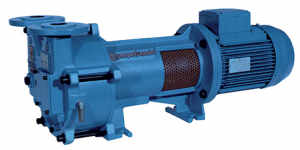Most people do not realize the degree in which science plays a role in the functionality of vacuum pumps. Because of the work that the different vacuum pump types perform, manufacturers rely on advanced technology, experience, and expertise to produce cutting-edge solutions. To better understand how these pumps function, continue reading.
Due to the science involved, the explanation as to how these pumps function is somewhat complicated. Overall, these pumps remove gas molecules from a sealed volume, creating a partial volume. Following is information on functionality from a physics versus a layman’s standpoint.
Physics Versus a Layman’s Explanation
For a 1 cubic meter container filled with gas, it would get expanded to a 2 cubic meter container. Coordinating with the larger size container, the volume of gas increases, ultimately filling the entire space. After expansion, the container gets divided, resulting in two 1 cubic meter containers, each one filled with half of the gas volume.
For emptying one of the containers, the volume gets reduced to zero, thereby forcing the gas out. Next, the divider gets removed so that the gas can once again expand to 2 cubic meters. This same process gets repeated, each time reducing the amount of gas.
In layman’s terms, the purpose of vacuum pumps is to remove molecules of air and other gases from a vacuum chamber. However, as the pressure within the chamber decreases, the process of eliminating the molecules becomes more difficult. For that reason, many manufacturers rely on industrial vacuum pumps. That way, the pump operates over a portion of an incredibly broad pressure range, usually from 1 to 10-6 Torr.
Vacuum Pump Types
The operating pressure range is what categorizes these pumps, something that varies based on the different vacuum pump types. However, all designs operate using the same fundamental principle as described above. The three categories include:
- Primary Pumps – Also referred to as backing pumps, these include both low and rough vacuum pressure ranges.
- Booster Pumps – These pumps also have low and rough vacuum pressure ranges.
- Secondary Pumps – Also called high vacuum pumps, they have pressure ranges of high, very high, and ultra-high.
Superior Quality Pumps
Regardless if you need a conventional pump or an industrial vacuum pump, PFS Pumps is your most reliable and trusted source. For help in choosing the appropriate product, one of our professional team members will gladly assist. We invite you to visit our website or call to get information on the products we offer.

